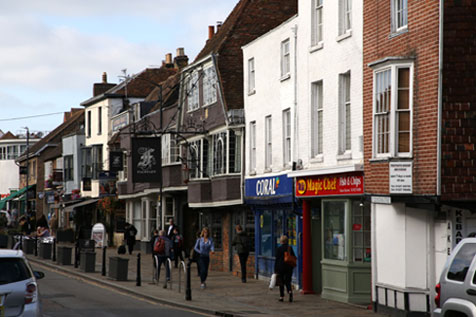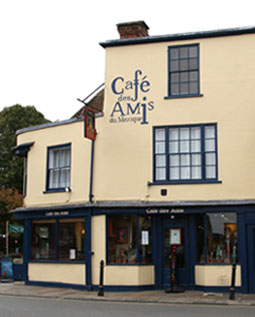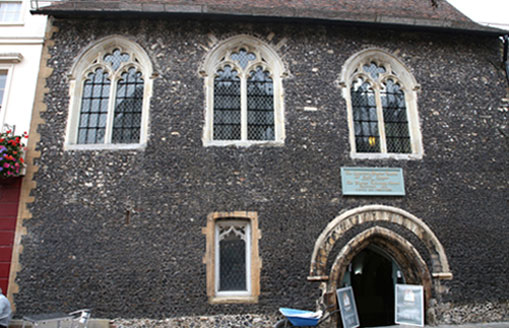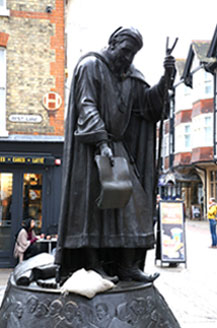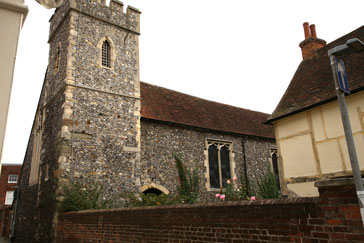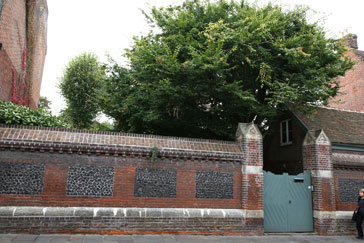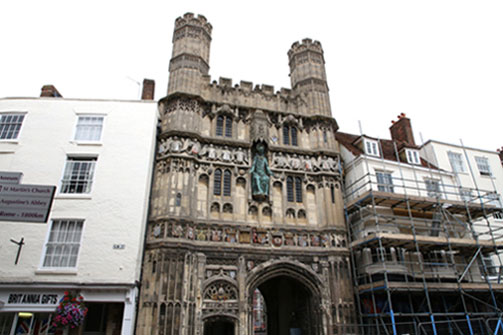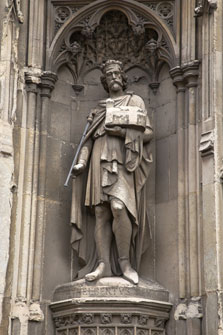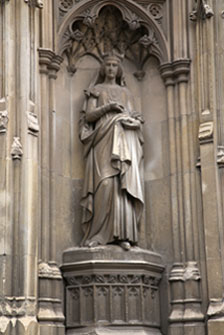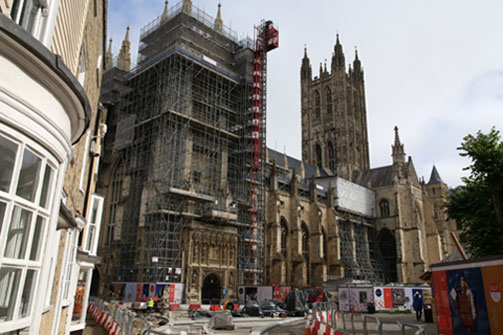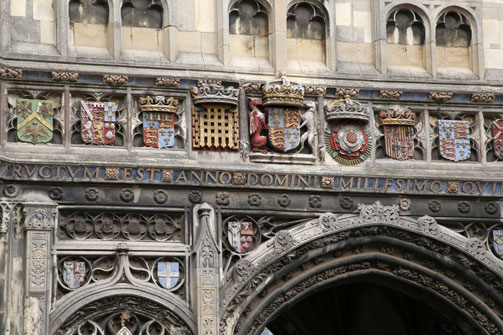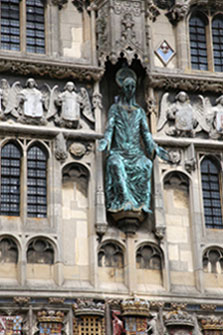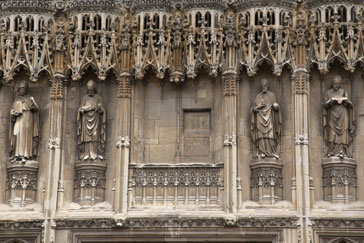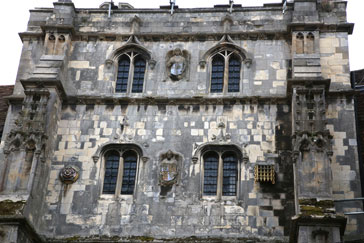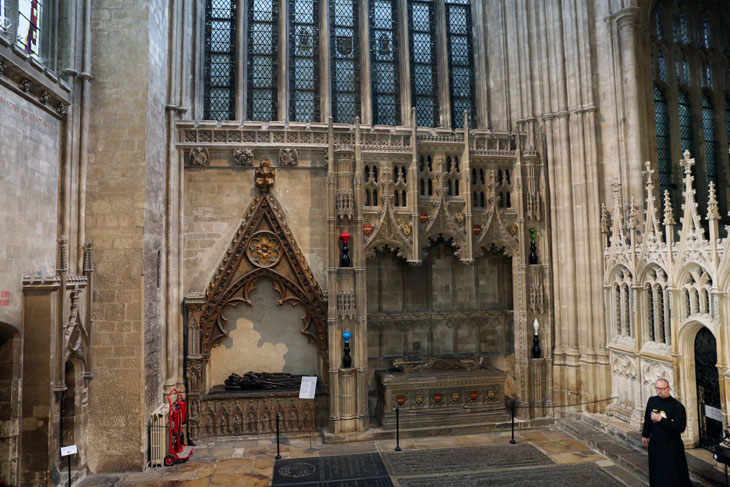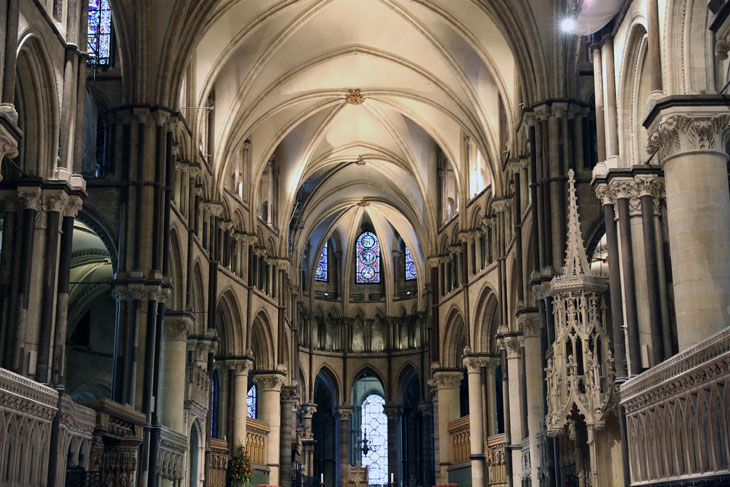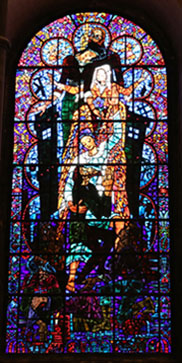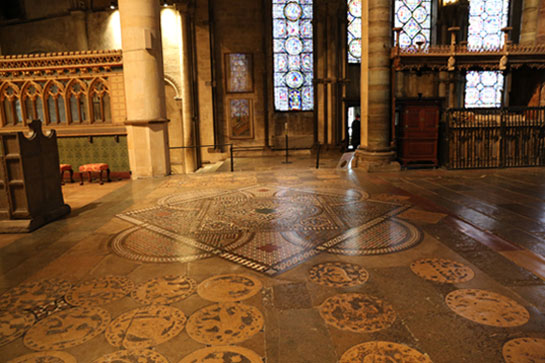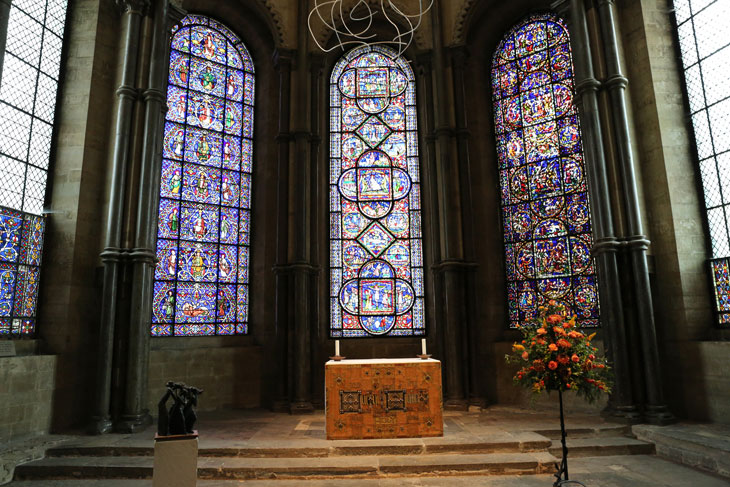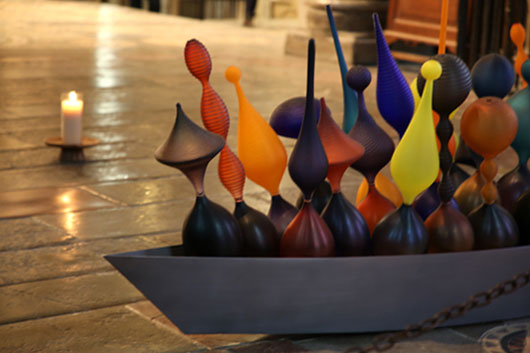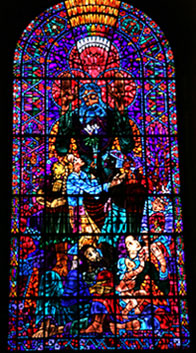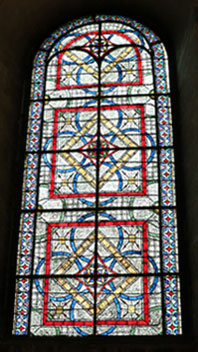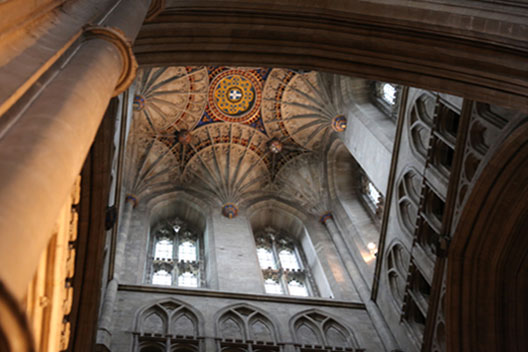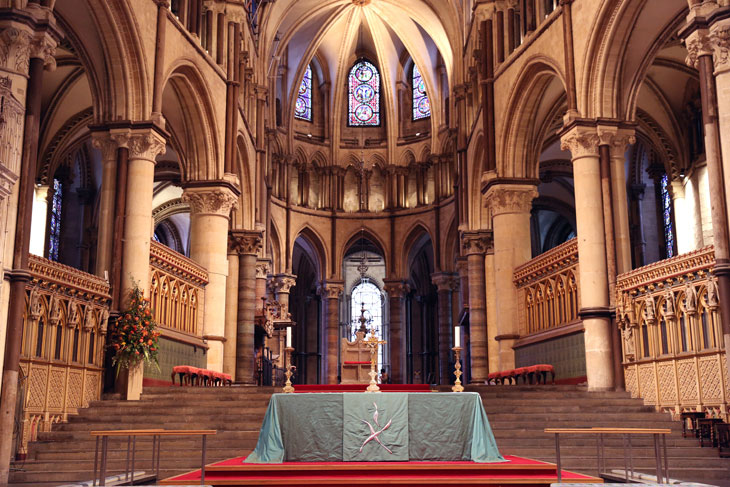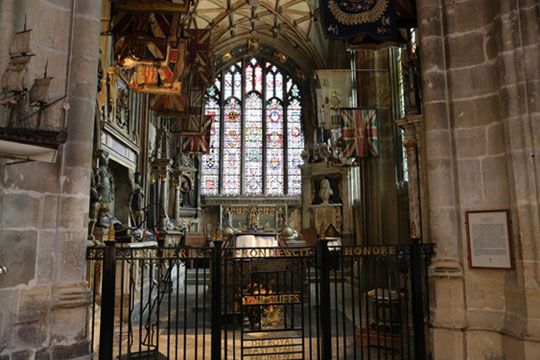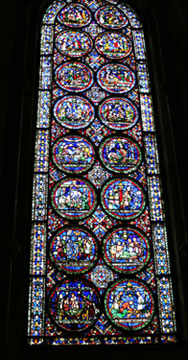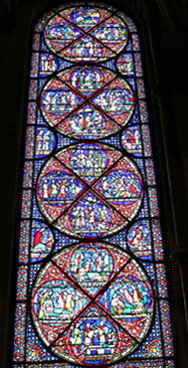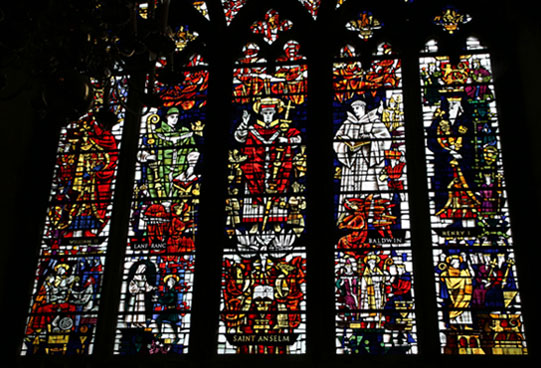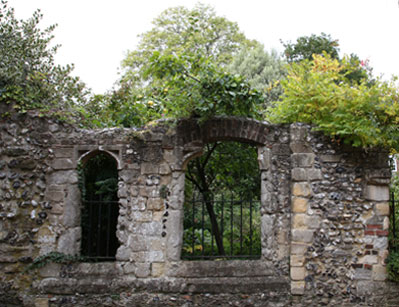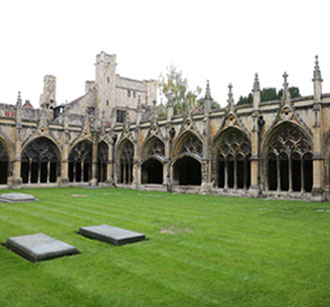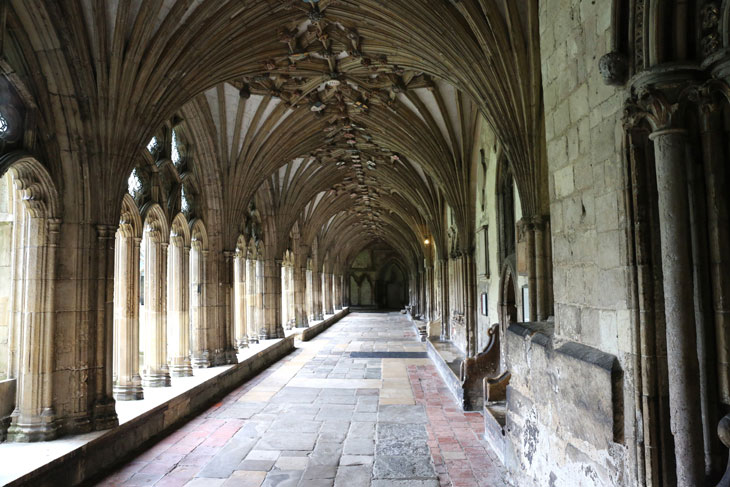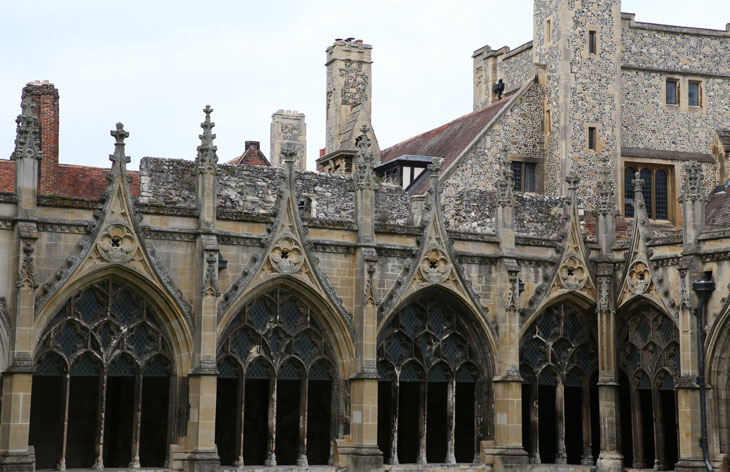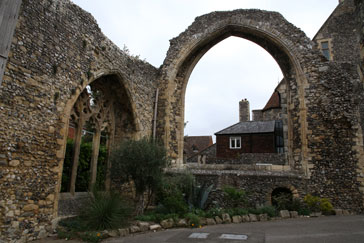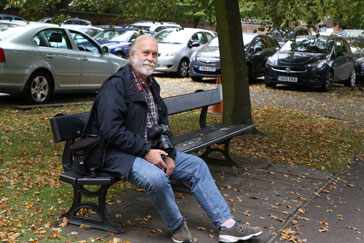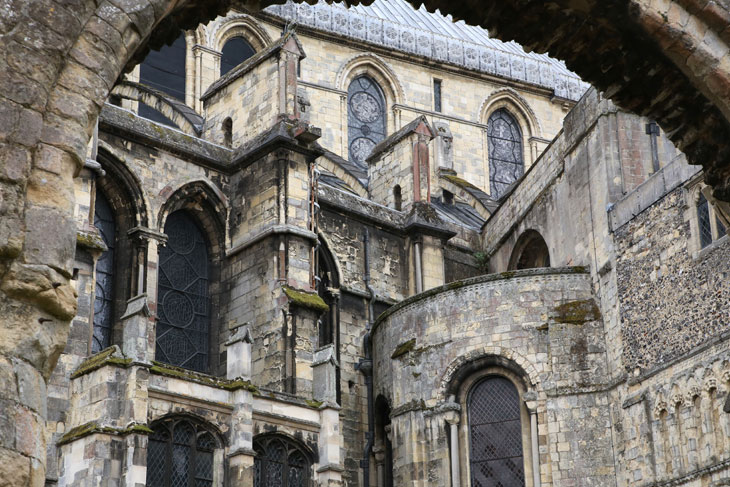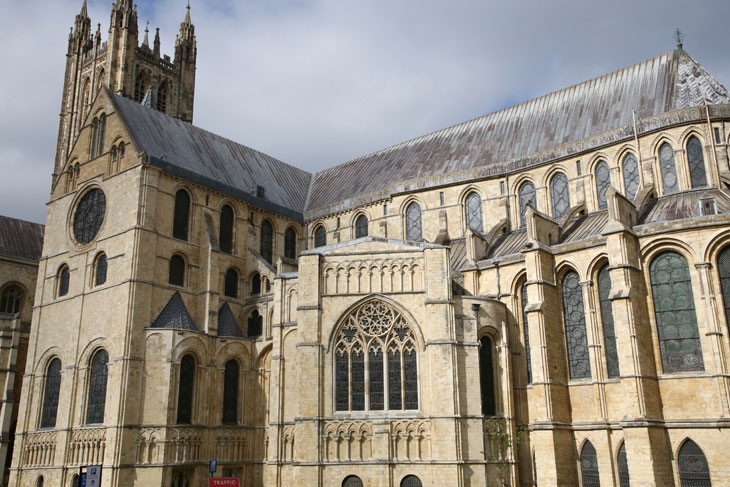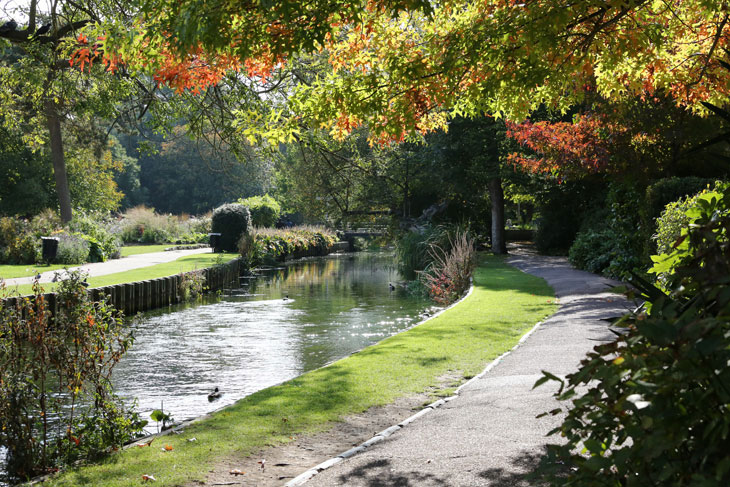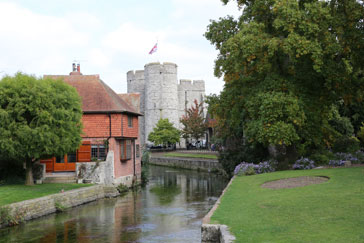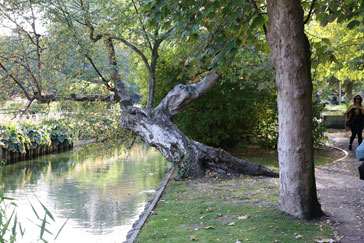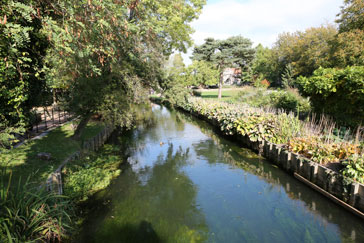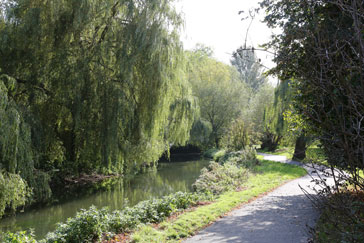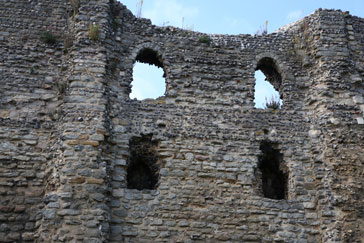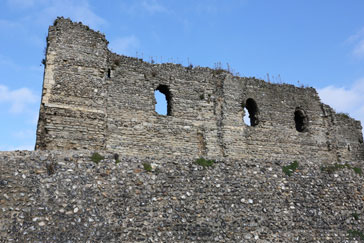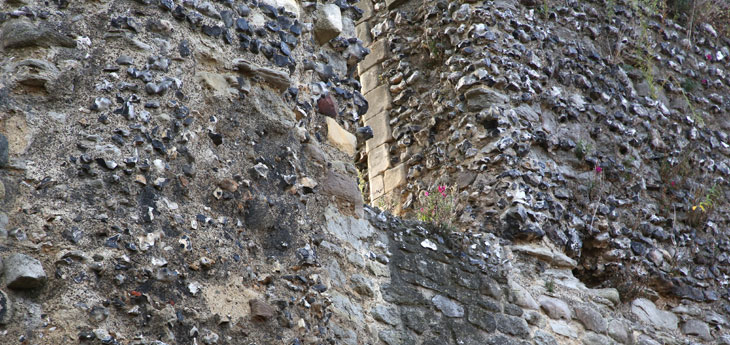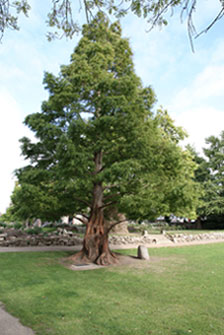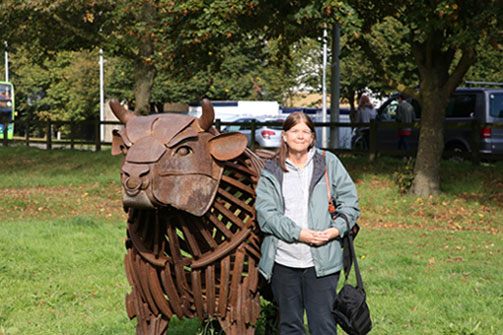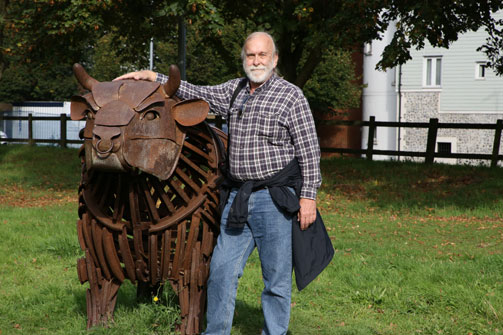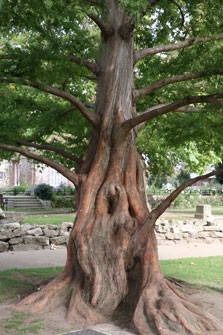Childhood Dreams
Canterbury Cathedral and Westgate Gardens
We wanted to see a bit of the south of England, so we decided to visit Canterbury before
returning to London. The town was the setting for "Canterbury Tales", the first
major piece of literature written in English, and it is also home of the famous cathedral
where Archibishop Thomas Becket was assassinated. Upon arrival, we discovered that our hotel
was mere feet from the historic WestGate. It's kind of strange to see buses, cars, and trucks
passing through the feudal structure. It seems that back in 2012 the city experimented with
banning the gateway to vehicular traffic, but I guess that experiment didn't work.
The Romans built a wall around the city as early as 300 AD, but the current gate was built
around 1380. Now it is the largest surviving medieval gatehouse in the country, and it houses
a museum including a replica of a convict's cell dating from the early 19th century.
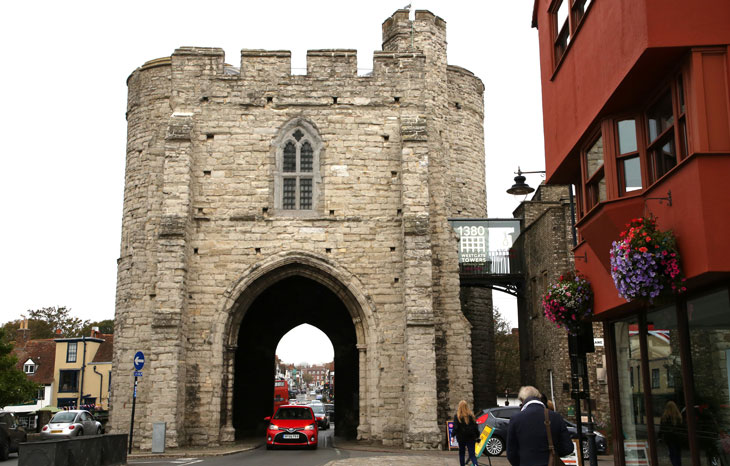
This was the view in the other direction looking down the street from outside our hotel. We ate
dinner at the Cafe des Amis across the street. One tourism site claims that Orlando Bloom, a native
of Canterbury, eats here whenever he is in town. The restaurant had a bustling, fun atmosphere and
the food was tasty.
We set out for Canterbury Cathedral the next morning. I gotta say I wasn't very impressed with the
shops we passed along the way. They all had a rundown, discount, sad sort of look. There were some
interesting buildings, statues, and walls, though.
We were not impressed by our first view of the cathedral either. It was covered with scaffolding,
and an army of workmen were making a LOT of noise. The parts that weren't covered with scaffolding,
though, were quite remarkable.
Inside everything was surprisingly serene, and the volunteer docents who greeted us were probably
the nicest docents I have ever met.
We were fortunate that we were visiting during an exhibition of large-scale glass installations
created by Baldwin & Guggisberg. The exhibition, called "Under an Equal Sky" commemorates the 100th
anniversary of the end of World War I. Each of the 100 clear glass bulbs in this installation represents
a year of remembrance. The bulbs are arranged in the shape of a ship to honor the many refugees who have
crowded into boats to escape hellish conditions.
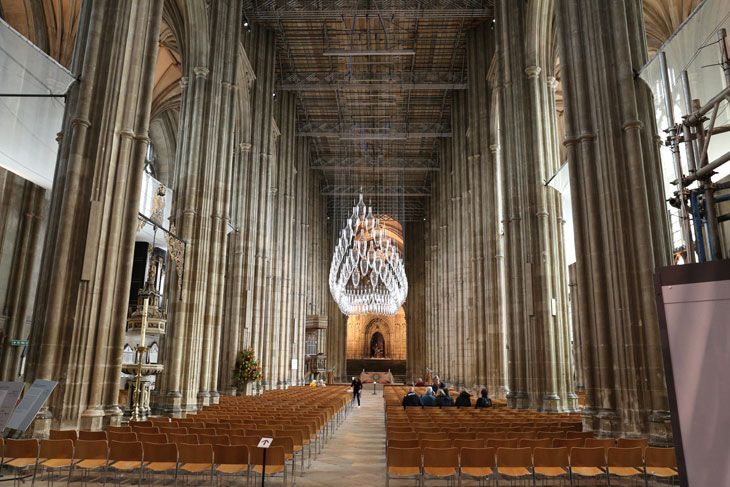
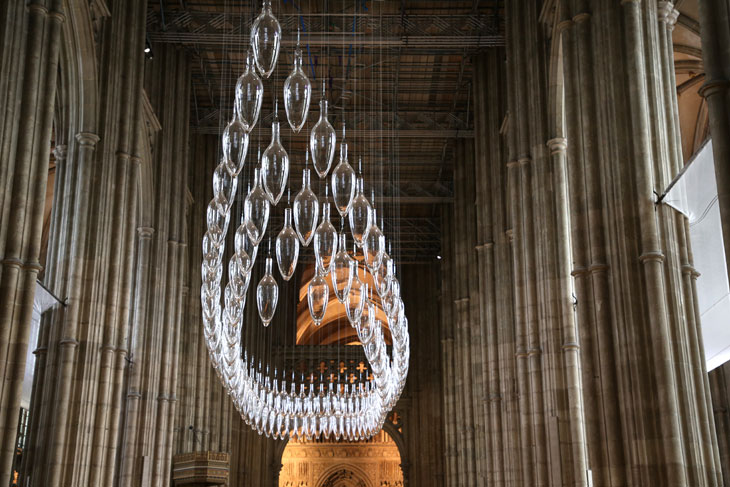
The first cathedral in Canterbury was founded in 597AD by St. Augustine who had been sent by Pope
Gregory the Great to convert the Angles. It has been destroyed and re-built several times over the
centuries. On the cathedral's web page, it describes itself as "the Mother Church of the worldwide
Anglican Communion."
It became a destination for medieval pilgrams after the Archbishop Thomas Becket was murdered in the
church in 1170 by four knights acting on the desires of King Henry II. After the murder, miracles
were reported and Thomas Becket was made a saint. As penance, the king walked barefoot over a mile
to the Cathedral where he was flogged by monks in front of St. Thomas' tomb.
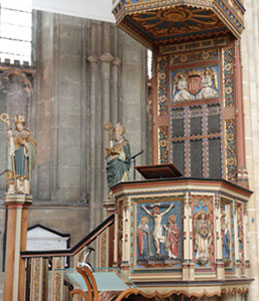
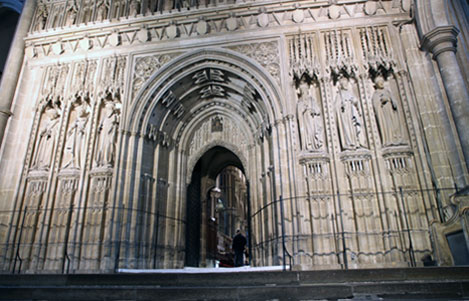
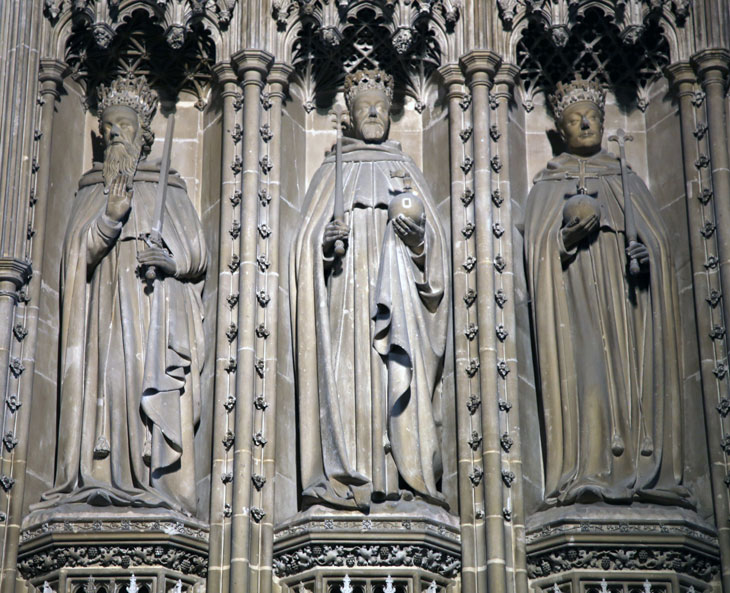
As I stood near the spot where the priest is standing in the picture below looking into one of the
small chapels, a docent asked me if I would like to go inside. She unlocked the door and requested
that I not take pictures inside. Although I am not a religious person, it felt good to sit quietly
and contemplate life in the peaceful room.
The images on the circular floor tiles in the picture on the right below include signs of the zodiac
and mythological beasts. Their origin is unknown, but they probably date back to the beginning of the
13th Century.
A candle burns on the floor where the shrine of St. Thomas stood until it was destroyed by the order
of King Henry VIII. One of the glass boats that is part of the special exhibition was sitting near it.
The cathedral was truly impressive, atmospheric, and very beautiful.
The outside was no less impressive. The grounds were extensive, and there were many old stone walls
and passageways.
Here's one last picture of the cathedral.
The weather was improving, and it was turning into a lovely autumn day. We took a left turn at the
Westgate Tower and walked along the River Stout through Westgate Park. Ducks floated on the water,
and bird song filled the air.
I had read that the ruins of a Norman castle erected by William the Conquerer in 1066 stood somewhere
in the park so we kept walking in search of it. Unfortunately, the remaining walls stand behind a
chainlink fence so you can't walk through the site like you can at Penrith Castle.
On the way back, we stopped by this bull statue to take pictures of each other. The statue stands in
a field that was once part of St. Mildred's Tannery. The field is now a wildflower
meadow, but the statue serves as a reminder of the area's industrial past.
That evening after dinner we stumbled upon what seemed to be the most happening place in Canterbury.
On our way to Canterbury Cathedral that morning, we had passed a Lush store nestled among the town's
depressing-looking shops. I wanted to buy something, but I didn't want to carry it around all day so
I passed it by. Now loud music was pouring out the doors and young people were crowded inside
enthusiastically sampling the products. It was like a big party.
Canterbury could really benefit from more stores that appeal to tourists.

